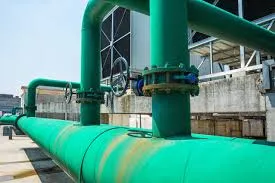
-
 Afrikaans
Afrikaans -
 Albanian
Albanian -
 Amharic
Amharic -
 Arabic
Arabic -
 Armenian
Armenian -
 Azerbaijani
Azerbaijani -
 Basque
Basque -
 Belarusian
Belarusian -
 Bengali
Bengali -
 Bosnian
Bosnian -
 Bulgarian
Bulgarian -
 Catalan
Catalan -
 Cebuano
Cebuano -
 China
China -
 China (Taiwan)
China (Taiwan) -
 Corsican
Corsican -
 Croatian
Croatian -
 Czech
Czech -
 Danish
Danish -
 Dutch
Dutch -
 English
English -
 Esperanto
Esperanto -
 Estonian
Estonian -
 Finnish
Finnish -
 French
French -
 Frisian
Frisian -
 Galician
Galician -
 Georgian
Georgian -
 German
German -
 Greek
Greek -
 Gujarati
Gujarati -
 Haitian Creole
Haitian Creole -
 hausa
hausa -
 hawaiian
hawaiian -
 Hebrew
Hebrew -
 Hindi
Hindi -
 Miao
Miao -
 Hungarian
Hungarian -
 Icelandic
Icelandic -
 igbo
igbo -
 Indonesian
Indonesian -
 irish
irish -
 Italian
Italian -
 Japanese
Japanese -
 Javanese
Javanese -
 Kannada
Kannada -
 kazakh
kazakh -
 Khmer
Khmer -
 Rwandese
Rwandese -
 Korean
Korean -
 Kurdish
Kurdish -
 Kyrgyz
Kyrgyz -
 Lao
Lao -
 Latin
Latin -
 Latvian
Latvian -
 Lithuanian
Lithuanian -
 Luxembourgish
Luxembourgish -
 Macedonian
Macedonian -
 Malgashi
Malgashi -
 Malay
Malay -
 Malayalam
Malayalam -
 Maltese
Maltese -
 Maori
Maori -
 Marathi
Marathi -
 Mongolian
Mongolian -
 Myanmar
Myanmar -
 Nepali
Nepali -
 Norwegian
Norwegian -
 Norwegian
Norwegian -
 Occitan
Occitan -
 Pashto
Pashto -
 Persian
Persian -
 Polish
Polish -
 Portuguese
Portuguese -
 Punjabi
Punjabi -
 Romanian
Romanian -
 Russian
Russian -
 Samoan
Samoan -
 Scottish Gaelic
Scottish Gaelic -
 Serbian
Serbian -
 Sesotho
Sesotho -
 Shona
Shona -
 Sindhi
Sindhi -
 Sinhala
Sinhala -
 Slovak
Slovak -
 Slovenian
Slovenian -
 Somali
Somali -
 Spanish
Spanish -
 Sundanese
Sundanese -
 Swahili
Swahili -
 Swedish
Swedish -
 Tagalog
Tagalog -
 Tajik
Tajik -
 Tamil
Tamil -
 Tatar
Tatar -
 Telugu
Telugu -
 Thai
Thai -
 Turkish
Turkish -
 Turkmen
Turkmen -
 Ukrainian
Ukrainian -
 Urdu
Urdu -
 Uighur
Uighur -
 Uzbek
Uzbek -
 Vietnamese
Vietnamese -
 Welsh
Welsh -
 Bantu
Bantu -
 Yiddish
Yiddish -
 Yoruba
Yoruba -
 Zulu
Zulu
fiberglass shell
The Versatility of Fiberglass Shells An Overview
Fiberglass shells are increasingly becoming a popular choice across various industries due to their unique properties, lightweight nature, and remarkable durability. Made from a composite material where glass fibers are woven and combined with a resin, fiberglass is recognized for its strength-to-weight ratio, corrosion resistance, and versatility. In this article, we will explore the applications, benefits, and manufacturing processes of fiberglass shells.
Applications of Fiberglass Shells
Fiberglass shells can be found in a wide range of applications. In the marine industry, they are frequently used to construct boat hulls due to their ability to resist water damage and withstand harsh marine environments. The lightweight nature of fiberglass allows for greater fuel efficiency and speed, making fiberglass boats a preferred choice among sailors and fishermen.
In the automotive sector, fiberglass is utilized to create body panels, hoods, and various components. This not only reduces the overall weight of vehicles, improving fuel efficiency, but also enhances aerodynamic performance. The customization potential of fiberglass makes it an attractive material for manufacturers and hobbyists alike, as complex shapes and designs can easily be produced.
In architectural applications, fiberglass shells are increasingly used for cladding and structural components. Their ability to mimic the appearance of traditional materials while providing superior insulation and weather resistance makes them ideal for modern buildings. The aesthetic flexibility of fiberglass means architects can experiment with innovative designs without compromising on functionality.
Moreover, fiberglass shells are employed in the sports and recreational industries, particularly in the production of helmets, surfboards, and kayaks. The excellent shock resistance of fiberglass protects users, while its lightweight property enhances maneuverability.
Benefits of Fiberglass Shells
fiberglass shell

One of the primary advantages of fiberglass shells is their durability. Fiberglass is less likely to crack or break compared to other materials, making it an ideal choice for products that require long-term use. Additionally, fiberglass is resistant to many harsh chemicals and does not corrode like metals, ensuring that it can withstand varying environmental conditions.
Another significant benefit is the ease of maintenance. Fiberglass can be easily cleaned and does not require extensive care, making it appealing for both consumers and manufacturers. Unlike wood, fiberglass does not require repainting or treatment, which saves time and costs in the long run.
Weight savings is another noteworthy feature of fiberglass shells. The reduced weight translates to better performance in numerous applications, from enhancing the speed of boats to improving fuel efficiency in automobiles. This characteristic also allows for easier handling and transportation of fiberglass products.
Manufacturing Process
The manufacturing of fiberglass shells typically involves several steps preparing the mold, layering the fiberglass and resin, curing, and finishing. Initially, a mold is created to shape the final product. Then, fiberglass cloth is layered into the mold, and resin is applied to saturate the fibers. Once this step is completed, the shell is allowed to cure, typically under controlled heat and pressure, which solidifies the structure.
After curing, the shell may undergo various finishing processes to enhance its appearance and functionality. This could entail sanding, painting, or adding protective coatings to ensure longevity and aesthetic appeal.
Conclusion
In conclusion, fiberglass shells represent an extraordinary blend of strength, lightweight characteristics, and versatility that make them suitable for a wide array of applications. As industries continue to seek efficient and innovative materials, fiberglass remains a top contender. Whether in marine, automotive, architectural, or recreational settings, the benefits and capabilities of fiberglass shells are sure to foster further advancements and applications in the future.
Latest news
-
Exploring the Benefits of Top Hammer Drifter Rods for Enhanced Drilling PerformanceNewsJun.10,2025
-
High-Precision Fiberglass Winding Machine for GRP/FRP Pipe Production – Reliable & Efficient SolutionsNewsJun.10,2025
-
FRP Pipes & Fittings for Shipbuilding - Corrosion-Resistant & LightweightNewsJun.09,2025
-
Premium FRP Flooring Solutions Durable & Slip-ResistantNewsJun.09,2025
-
Premium Fiberglass Rectangular Tanks Durable & Lightweight SolutionNewsJun.09,2025
-
Tapered Drill String Design Guide Durable Performance & UsesNewsJun.09,2025









